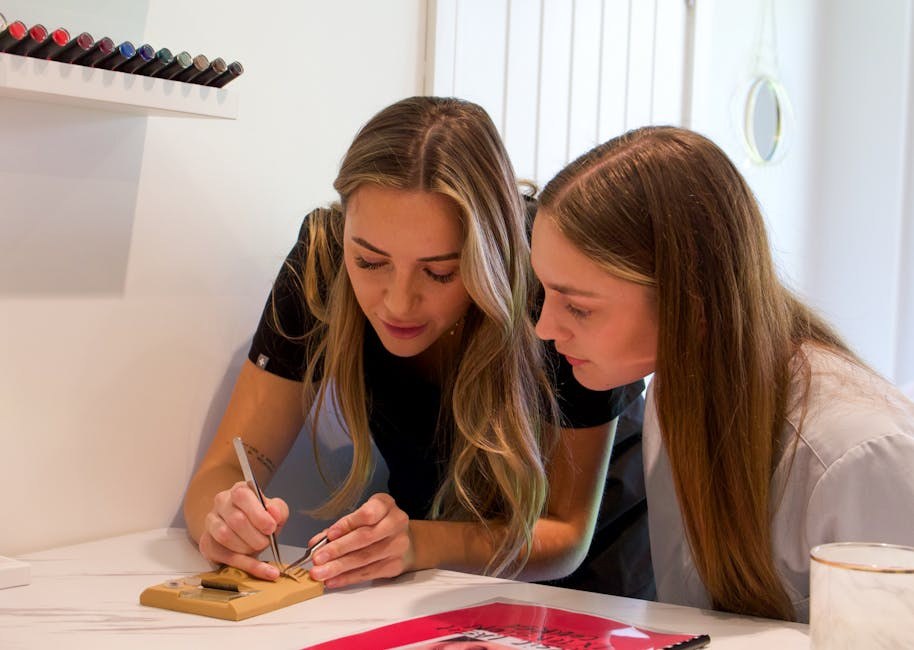Bringing an animal into a relationship is not a cute impulse – it is a joint promise to show up every single day. When couples decide to get a pet together, they are volunteering for early alarms, muddy paws, vet forms, and hard choices that will stretch well beyond a honeymoon phase. If you’re weighing this step, slow the scroll and look closely at what the choice actually represents: long-term teamwork, everyday reliability, and a shared picture of life that can hold steady through change. This guide reframes the conversation so you can decide, with clear eyes, whether now is the right moment to get a pet together.
What Sharing a Companion Animal Really Means
Opting to get a pet together signals that your relationship is designed for the long run. Pets need consistency – meals on time, boundaries that don’t switch with each person’s mood, and routines that outlast busy seasons. That steadiness only happens when both partners trust one another to make good choices even when the other isn’t around. You will not come home at the same hour every day; you will not agree on every method; you will not always feel energetic. The animal still needs gentle structure, no matter what. Choosing to get a pet together therefore means you believe your partnership can deliver that structure without turning care into conflict.
A shared animal is not a relationship makeover, and it is not a shortcut to closeness. If tension already bubbles under the surface, a new puppy or cat won’t fix it – in fact, another living creature can become an emotional Band-Aid that slips off the moment the training gets messy. Before you get a pet together, ask whether you two repair disagreements with listening or with distractions. An animal should never carry the weight of patching over unsolved issues.

Money matters as well. Food, healthcare, supplies, and the occasional emergency can add up fast. Planning a trip suddenly includes pet-sitting costs; spontaneous weekends away now require preparation instead of a last-minute bag toss. To get a pet together is to accept that your calendars and your budget will start revolving around something beyond yourselves – and to do it willingly.
The Mindset Shift Behind the Decision
When you get a pet together, you’re not acquiring an accessory. You’re forming a tiny team that lives in your home. That adds a new layer to daily life: decisions are made with an animal’s needs in the room, even when the animal is asleep in the corner. This mindset shift changes small choices – where you store shoes, how you handle doorbells, what you do after work – and it changes big choices, too. Once you get a pet together, moving apartments, switching jobs, or planning longer travel starts with the question, “How will this affect our dog or cat?” If both of you can ask that question without resentment, you’re leaning in the right direction.
A Practical Readiness Framework
Use the following readiness framework to evaluate your situation. Treat it like a candid mirror, not a performance review. The more honestly you answer, the easier it is to tell whether you should get a pet together now or give yourselves time to grow first.

-
You already function smoothly under one roof
Cohabitation introduces a thousand tiny negotiations – dishes, laundry, noise, sleep, bills. If you haven’t lived together, the adjustment and the animal will collide at once. It’s far better to learn each other’s rhythms before you get a pet together. Give yourselves a solid stretch of shared living – months, not days – to see how chores are handled, how mornings feel, and how you bounce back from stressful weeks. Stability in everyday life gives a new animal a calmer landing.
- Observe how you split routine chores without prompting.
- Notice whether one person becomes the default cleaner – a red flag for resentment once you get a pet together.
- Check how you each respond to interrupted sleep; young pets will test that skill.
-
Your future plans are discussed in real terms
Dreams are lovely, but plans are actionable. Before you get a pet together, talk through the everyday future you actually anticipate: likely moves, career changes, home purchases, marriage, or a preference to keep things as they are. A dog or cat can live with you for a decade or more; vague ideas won’t guide feeding schedules or relocation costs. The aim here isn’t to carve your lives in stone – it’s to confirm that your trajectories overlap enough to make shared care feel natural.
- Map out the next couple of years: possible cities, housing, and work patterns.
- Decide whether either of you expects to change hours drastically; that matters once you get a pet together.
- Be honest about tolerance for routine – pets thrive on it.
-
House rules for the animal are agreed in advance
Clarity prevents confusion – for the pet and for you. Talk through your non-negotiables before you get a pet together. Are couches fair game? Is the bedroom open at night? Are there off-limits rooms? Do you prefer crate training or an exercise pen? Consistency is compassion; mismatched rules create anxious animals. Align now so you’re not debating at midnight with a whining puppy watching your every word.

- Decide on sleeping arrangements and stick to them.
- List furniture boundaries and household zones.
- Choose a training approach you both commit to when you get a pet together.
-
You handle each other’s worst days without blame
Animals magnify your stress responses. There will be accidents on the rug, shoes chewed to ribbons, and nights when nobody sleeps. If your style under pressure is to lash out or withdraw completely, those patterns will show up fast once you get a pet together. Readiness means you can be tired, inconvenienced, and still speak to each other with basic kindness – because the pet is learning from your tone as much as from your commands.
- Practice a plan for setbacks: who cleans, who comforts, and how you reset.
- Adopt the mantra “frustrated, not furious” – the mood pets can navigate.
- Remember that patience today builds calmer habits tomorrow after you get a pet together.
-
Shared responsibility is the default, not the exception
One person cannot do everything. Before you get a pet together, outline the essential tasks and divide them with respect for each person’s schedule. If one partner works from home, that doesn’t automatically make them the permanent walker, groomer, and appointment booker. Fairness is felt in practice, not in theory. When responsibilities are balanced, care feels like teamwork instead of a tally of IOUs.
- Who books vet visits and tracks vaccinations?
- Who handles grooming, litter changes, nail trims, or training sessions?
- What’s the weekday walking plan once you get a pet together – mornings, lunch, evenings?
-
Your budget can absorb the costs without panic
Food, equipment, routine care, and surprise vet bills require a cushion. If a modest emergency would topple your finances, pause. To get a pet together responsibly, you need a realistic line item for monthly basics and a plan for the occasional curveball. Decide how you’ll split expenses – equally, proportionally to income, or by category – and put that agreement in writing so money stress doesn’t attach itself to the animal.
- Create a shared expense tracker before you get a pet together.
- Set aside a small emergency fund just for the animal.
- Agree on spending limits for toys and accessories – impulse buys add up.
-
Logistics are thought through for regular days and travel
Routine is the backbone of a contented pet. If you both travel or keep long hours, brainstorm coverage before you get a pet together. Reliable sitters, trustworthy neighbors, and back-up keys are practical, not paranoid. Emergencies happen – flights get delayed, meetings run over, trains stall. A plan ensures your dog gets the evening walk or your cat gets dinner on time even when life inconveniently disagrees.
- Line up at least two backup caregivers.
- Keep a written care sheet on the fridge once you get a pet together.
- Store spare leashes, food, and litter where a helper can find them fast.
-
You’re aligned on the kind of animal who fits your lives
Compatibility matters. A high-energy herding dog and a studio apartment can work, but only with a lifestyle built around exercise and training. Before you get a pet together, speak openly about energy levels you can sustain, size preferences, adopt-don’t-shop values, openness to special needs, and what you want the daily relationship to feel like – jogging partner, goofy couch buddy, dignified cat overlord. Alignment here saves you and the animal from mismatched expectations.
- Write a short “ideal day” for the pet and compare notes.
- Clarify what traits you’re prepared to nurture after you get a pet together.
- Be honest about noise tolerance, shedding, and training time.
-
Family planning and animal temperament aren’t an afterthought
People often say that caring for an animal is practice for parenting. In some ways that’s true – you share responsibility for a dependent being – but the comparison has limits. Even so, you should discuss how children fit into your vision before you get a pet together. If one of you never wants kids and the other is unsure, clarity helps in choosing the right animal and training priorities. If you expect your family to include young children, think about how you will supervise play, introduce boundaries, and advocate for the animal’s comfort.
- Talk through hypothetical scenarios about kids and visitors.
- Plan how you’ll protect the pet’s safe spaces after you get a pet together.
- Align on what you’ll do if the animal is uncomfortable with children.
Turning Agreement into Daily Habit
Readiness doesn’t end at the adoption appointment. The real test begins when the novelty fades. If you get a pet together, anchor your home life around routines that keep everyone regulated. Predictable feeding times, consistent cues, and calm transitions do more than create convenience – they build trust. Make it easy for the animal to understand your expectations by removing guesswork from the environment.
- Choose a few simple cues and use them the same way every day once you get a pet together.
- Structure mornings and evenings so walks, play, and rest happen in a steady order.
- Keep enrichment on hand – puzzle feeders, training games, and quiet spaces.
Communication Skills You’ll Actually Use
Most couples say they communicate well; pets will reveal how true that is. The dog misses a walk and has an accident – do you assign blame or solve the problem? The cat knocks a glass off the counter – do you snap at each other or secure the shelves? When you get a pet together, adopt the habit of short, neutral check-ins: “I’ve got the evening feeding; can you handle tomorrow morning?” The sentence is simple, but the discipline is profound.
- Use calendars and reminders so agreements don’t live only in memory.
- State feelings without accusations – especially in sleepy, messy moments after you get a pet together.
- Revisit roles monthly; schedules shift and workloads should follow.
Why “Not Yet” Can Be the Kindest Answer
Sometimes the bravest choice is to wait. If you’re pulled in different directions, or money is tight, or your lease forbids animals, pause with compassion. You are not failing by postponing. In fact, deciding not to get a pet together right now can protect the animal you hope to love later – and protect your relationship from unfair strain. Make a list of what needs to change and set a realistic timeline to revisit the decision.
Red Flags That Deserve Attention
As you evaluate whether to get a pet together, watch for patterns that complicate care:
- Chronic score-keeping about household tasks.
- Financial secrecy or recurring overdrafts.
- Using big gestures to cover unresolved conflict – an especially risky sign if the impulse is to get a pet together as a distraction.
- Dismissive attitudes toward training, boundaries, or routine.
- Indifference to the animal’s stress signals – pacing, hiding, or excessive vocalizing.
When You’re Ready, Start Thoughtfully
If your answers point to readiness, wonderful. The next step is to align your first weeks at home. When couples get a pet together, the early days set the tone for years. Prepare your space before the animal arrives: secure trash cans, store tempting shoes, and decide where food and water will live. Establish bathroom spots, quiet zones, and a bedtime rhythm on day one. Keep introductions slow and positive – neighbors, elevators, doorways – so the world feels safe, not overwhelming.
- Schedule the first vet appointment ahead of adoption where possible.
- Take turns leading routine tasks after you get a pet together so both voices become reassuring.
- Celebrate small wins: a calm sit at the door, a relaxed nap after play, a successful car ride.
Conflict Without Chaos
Even strong couples will disagree – about food brands, training techniques, or whether the dog can hop on the bed. The goal isn’t perfect alignment; it’s recoverability. When you get a pet together, commit to arguing in a way that doesn’t scare or confuse the animal. Lower voices, take a breath, revisit later. If you need a tie-breaker, default to the choice that keeps routines predictable and prevents the pet from rehearsing stressful behaviors.
Keeping the Promise Over Time
Months in, the thrill quiets and ordinary life returns. This is where the promise deepens. Keep learning together – not to chase prestige, but to refine your shared language with the animal. When you get a pet together, the magic is in the daily repetition: the walk at dusk, the treat for a patient wait, the steady hand during a nail trim. These rituals don’t shout, but they build a home where trust feels inevitable.
A Final Self-Check Before You Decide
Ask yourselves three grounding questions: Can we maintain consistent routines when we are tired? Can we be kind under stress? Can we adjust our plans without resentment? If “yes” feels authentic, you’re likely ready to get a pet together. If “not yet” shows up anywhere, honor it. There is courage in patience, and there will be a better moment to get a pet together when your lives can carry the commitment with ease.
Take your time. Talk it through. When the two of you choose to get a pet together for the right reasons – not to fill a gap, not to mask a conflict, but to share care intentionally – you’ll feel the difference every time a sleepy animal curls up at your feet and the house exhales like it belongs to all three of you.